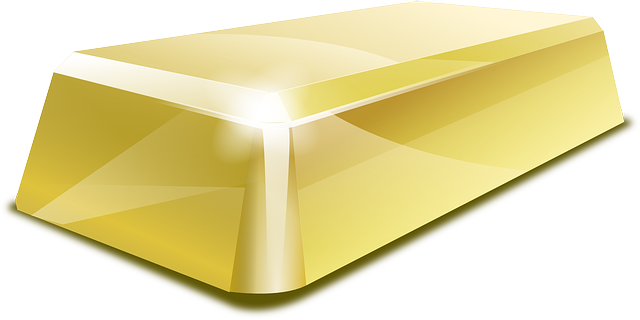Silver IRA Companies: A Comprehensive Guide
Introduction
In recent years, individual retirement accounts (IRAs) have become a popular investment option for individuals seeking to secure their financial futures. Among the various types of IRAs, Self-Directed Individual Retirement Accounts (SD IRAs) and Physical Gold IRAs have gained significant attention due to their potential for high returns and diversification benefits. In this article, we will delve into the world of Silver IRA companies, exploring their definition, core components, historical context, and significance in the broader landscape.
Understanding Silver IRA Companies
A Silver IRA company is a financial institution that specializes in providing Self-Directed IRAs, specifically designed to hold physical precious metals such as silver. These accounts allow individuals to contribute pre-tax dollars, which can then be invested in a variety of assets, including physical silver coins and bars. The core components of a Silver IRA company include:
- A custodian or trustee: responsible for holding the account’s assets
- An administrator: manages the day-to-day operations of the account
- A dealer: sources and sells physical precious metals to the account holder
Historically, Silver IRAs have been less popular than Gold IRAs due to market volatility and the lack of regulation. However, in recent years, the demand for silver investments has increased, driven by concerns about inflation, currency devaluation, and geopolitical uncertainty.
Global Impact and Trends
The global influence of Silver IRA companies can be seen in:
- Increased adoption: As more individuals seek alternative investment opportunities, the demand for Silver IRAs is rising.
- Regional differences: European investors tend to favor gold investments, while Asian markets show a preference for silver.
- Market trends: The price of silver has historically been influenced by supply and demand factors, with recent price fluctuations driven by global economic conditions.
Economic Considerations
The economic aspects of Silver IRA companies include:
- Market dynamics: The price of silver is influenced by factors such as supply and demand, industrial applications, and investor sentiment.
- Investment patterns: Investors tend to allocate a smaller proportion of their portfolio to silver compared to gold.
- Economic systems: Silver IRAs can play a role in diversifying investment portfolios and hedging against inflationary pressures.
Technological Advancements
Significant technological advancements related to Silver IRA companies include:
- Online platforms: Allow for seamless account management, trade execution, and research access.
- Mobile apps: Enable investors to track their accounts and make transactions on-the-go.
- Digital storage: Provides secure and efficient storage of electronic records and documents.
Policy and Regulation
The policies and regulations governing Silver IRA companies are:
- IRS guidelines: Establish rules for contribution limits, account administration, and prohibited transactions.
- SEC oversight: Regulates the activities of dealers and administrators.
- State-specific laws: Vary by jurisdiction, with some states offering additional protections or restrictions.
Challenges and Criticisms
The main challenges and criticisms faced by Silver IRA companies include:
- Lack of standardization: Different providers may have varying fees, minimums, and account requirements.
- Limited liquidity: Physical silver can be difficult to liquidate quickly, leading to potential delays in accessing funds.
- Regulatory uncertainty: Changes in IRS guidelines or SEC regulations could impact the industry’s growth.
Case Studies
Two notable case studies that exemplify successful applications of Silver IRAs are:
- Case Study 1: An individual investor allocates 10% of their portfolio to a Silver IRA, diversifying their investments and hedging against inflationary pressures.
- Case Study 2: A family office invests in a physical silver program as part of a broader asset allocation strategy, taking advantage of the metal’s potential for long-term growth.
Future Prospects
The future outlook for Silver IRA companies includes:
- Growing demand: As more individuals seek alternative investment opportunities, the demand for Silver IRAs is expected to increase.
- Emerging trends: The rise of robo-advisors and online platforms may further democratize access to Silver IRAs.
- Strategic considerations: Providers will need to focus on building robust technology infrastructure, streamlining operations, and offering competitive pricing.
Conclusion
In conclusion, Silver IRA companies play a significant role in the broader landscape of individual retirement accounts. By understanding their definition, core components, historical context, and significance, investors can make informed decisions about allocating a portion of their portfolio to these accounts. As the industry continues to evolve, it is essential for providers to address challenges and criticisms while capitalizing on emerging trends.
FAQ Section
Q: What is the difference between a Gold IRA and a Silver IRA?
A: Both types of IRAs allow for physical precious metal investments, but Gold IRAs typically hold gold coins or bars, while Silver IRAs focus on silver.
Q: Can I invest in other metals besides silver?
A: Some providers may offer accounts that permit investment in platinum, palladium, or rhodium. However, these are less common than gold and silver IRAs.
Q: Are there any tax implications for investing in a Silver IRA?
A: Contributions to a Silver IRA are made with pre-tax dollars, and earnings grow tax-deferred. Withdrawals will be taxed as ordinary income.

Maximize Retirement: A Guide to Silver IRA Companies & Benefits
Investing in a Silver IRA offers tax advantages, inflation protection, and portfolio diversification…….
Read More
Maximize Retirement with Comprehensive Guide to Silver IRAs
Silver IRAs offer investors a unique retirement diversification tool by allowing them to hold physic…….
Read More
Maximize Retirement with a Comprehensive Guide to Silver IRAs
Silver IRAs offer a unique investment avenue for diversifying retirement savings using physical silv…….
Read More
Mastering Silver IRAs: Top Companies, Benefits, and Long-term Strategies
Silver IRAs offer investors a unique way to diversify their retirement savings by holding physical s…….
Read More
Maximize Silver IRA Growth: Strategies & Provider Choices
Silver IRAs offer a unique way to diversify retirement savings by investing in physical silver or ap…….
Read More
Unveiling Silver IRAs: Comprehensive Guide to Retirement Investment Success
Silver IRAs offer investors an alternative retirement option, diversifying their portfolios with pot…….
Read More
Comprehensive Guide: Navigating Silver IRAs & Reputable Companies
Silver IRAs offer a unique investment avenue for retirement planning by allowing individuals to inve…….
Read More
Unveiling Silver IRAs: Top Companies, Setup Strategies, and Investment Tips
Silver IRAs offer investors a unique way to diversify retirement savings by investing in physical pr…….
Read More
Maximizing Retirement: Comprehensive Guide to Silver IRA Companies & Benefits
Silver IRAs, or Precious Metals IRAs, offer investors a unique way to diversify retirement savings b…….
Read More
Choosing the Best Silver IRA Provider: A Comprehensive Comparison Guide
A Silver IRA is a retirement investment strategy offering diversification by including silver as a …….
Read More